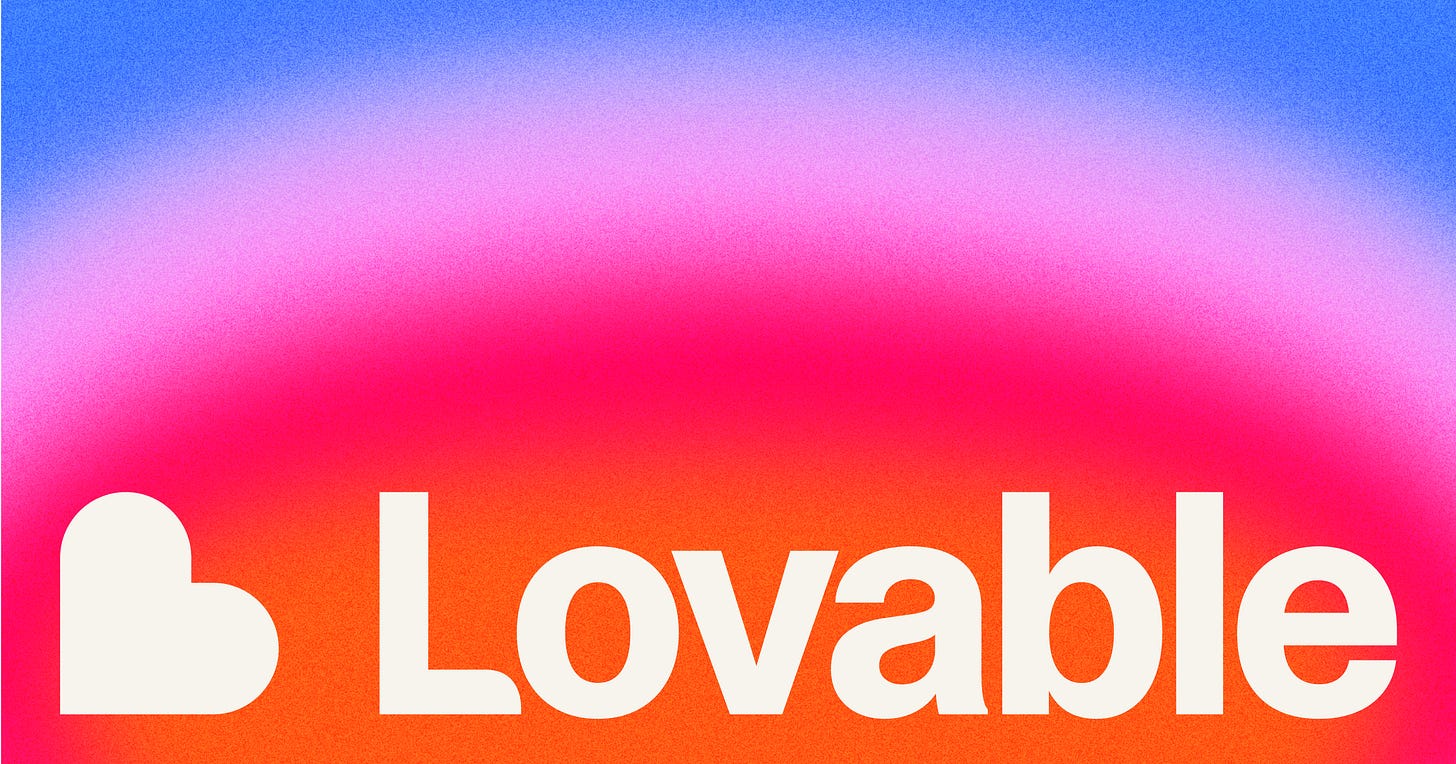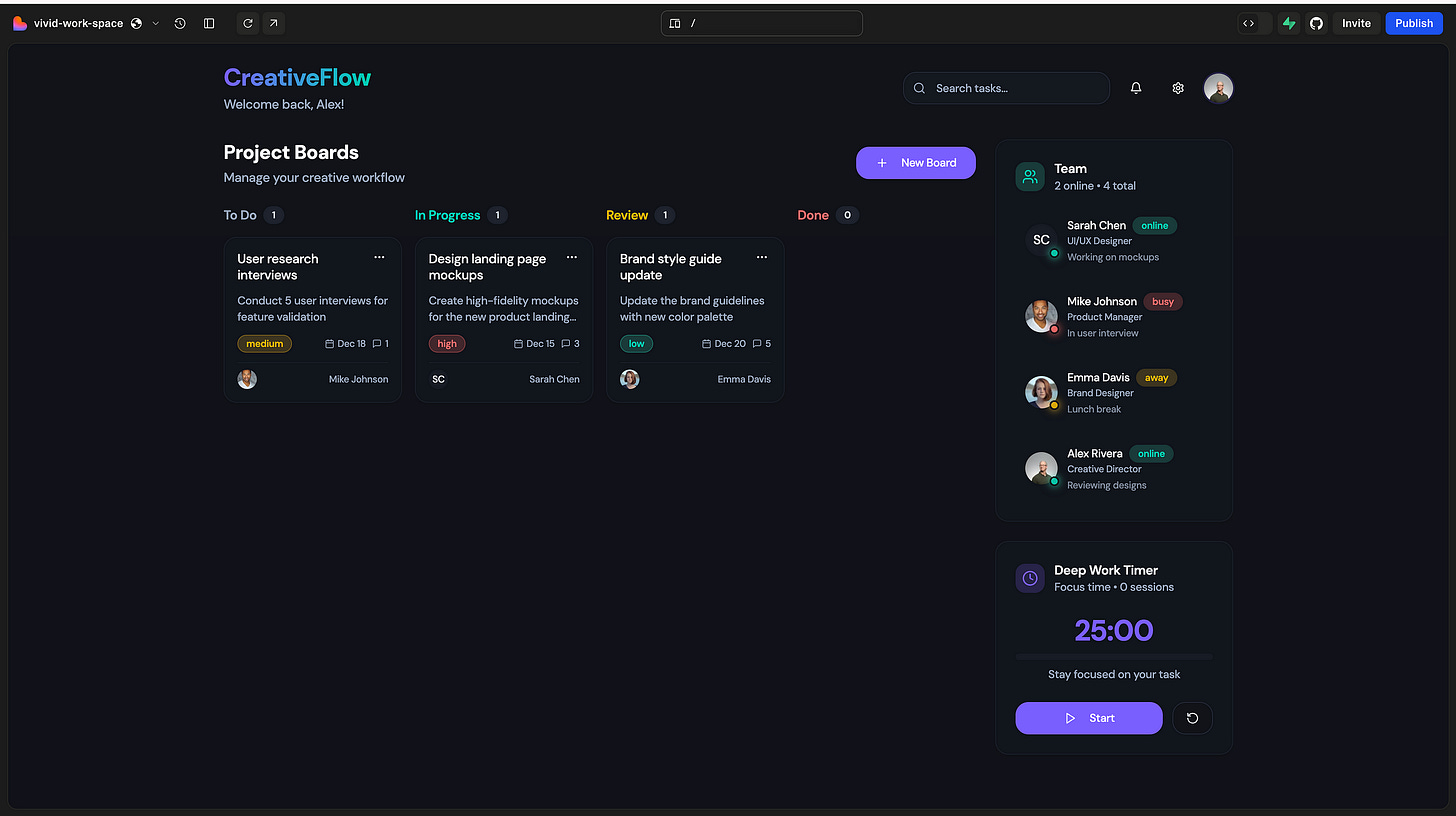How to 10x your UI with Lovable
A step-by-step cheatsheet to craft pixel-perfect UIs with Lovable’s design prompt system — for designers, makers, and creative coders.
TL;DR:
This article breaks down a 5-step prompt framework for generating high-quality UI designs using Lovable, an AI-powered design assistant. It covers how to define your product’s purpose, emotional tone, brand guidelines, preferred UI library, and feature-specific details — so your output feels polished, professional, and brand-aligned. Bonus: a plug-and-play final prompt and expert tips to level up your workflow.
Tired of mid-tier AI UI results? It’s probably your prompt.
Lovable is quietly becoming the go-to for turning vague product ideas into world-class UI. But to make it shine, you need the right prompt formula — the kind that feels like you’re handing off to a top-tier designer.
Here’s the 5-part formula I use to get results that make people say:
“Wait, an AI made this?”
High-Level Description
A 1-liner that explains what you’re building, and for whom.
Example: “Design a mobile-first, task management app for remote creative teams.”
Keep it clear, inspiring, outcome-focused.
2. Look & Feel
The emotional tone, visual vibes, and interaction quality you want.
Example: “Make it feel like it was crafted by an award-winning designer. Ultra-modern, playful, highly usable, with smooth microinteractions and delightful UX touches that elevate the entire experience.”
Use emotional design language (delightful, bold, tactile, cinematic, brutalist, etc.).
3. Brand Guidelines
Your design DNA — fonts, spacing, colors, and theme preferences.
Example: “Use DM Sans with medium weight. Letter spacing: -2. Line height: 1.4. Primary color: Soft Purple #7A5FFF. Secondary: Teal #00D1B2 and Coral #FF6B6B. Prioritize a dark mode UI.”
Precision here = beautiful, brand-aligned results.
4. UI Library / Style
The system you want your UI components based on.
Example: “Use shadcn/ui for all components, with subtle shadows, generous padding, and large rounded corners (2xl) for a polished, modern look.”
Mention any design systems, libraries, or spacing scales you prefer.
5. Page & Component Details
Your wishlist — layouts, interactions, animations.
Example: “Include dashboard with drag-and-drop task boards, team member avatars with live status, and an animated timer for deep work sessions.”
Think in flows, not just features.
Final results:
https://vivid-work-space.lovable.app
“Design a mobile-first, task management app for remote creative teams.
Make it feel like it was crafted by an award-winning designer so it feels ultra-modern, playful, highly usable, with smooth microinteractions and a delightful user experience.
Use DM Sans with medium weight. Letter spacing: -2. Line height: 1.4. Primary color: Soft Purple #7A5FFF. Secondary: Teal #00D1B2 and Coral #FF6B6B. Prioritize a dark mode UI.
Use shadcn/ui for all components, with subtle shadows, generous padding, and large rounded corners (2xl) for a polished, modern look.
Include dashboard with drag-and-drop task boards, team member avatars with live status, and an animated timer for deep work sessions.”
So, what did we do to achieve it?
Iterate like a designer: Prompt once, refine twice. Better spacing, bolder type, clearer hierarchy.
Think in flows, not features: Ask for “Onboarding screen with animation” vs just “Sign-up form.”
Use emotional cues: Words like “luxurious”, “brutalist”, “friendly”, “glitchy” are powerful.
Now you know the Lovable prompt system. Try it today — and post your results. You might just 10x your UI.
👋 Let’s be friends! Follow me on Substack, on X, and connect with me on LinkedIn. Don’t forget to follow me here on Medium as well for more design-related content.
Read also:
AI prototyping: how I actually build usable products with v0, Bolt, Replit & Lovable
A hands-on guide to AI prototyping that actually ships — from Figma to functional products in under 2 hours.medium.com
What does AI 2027 mean for designers? Why most aren’t ready…
A terrifyingly plausible forecast says AI will outpace most designers and coders by 2027.medium.com
Designers are quietly winning with AI personalization
Discover how AI-powered personalization and ambient interfaces are shaping the future of user experience design.medium.com




